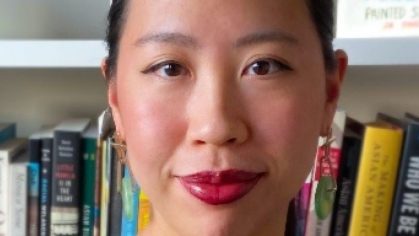Rutgers-Newark Report Looks at Troubling Educational Impact of School Segregation in New Jersey
A Rutgers University–Newark report—one of the first to detail the educational impacts of segregation in New Jersey—found that in schools segregated by race and class, there are fewer guidance counselors, higher student teacher ratios and fewer high-level courses than in other schools.
The most recent report, by the Joseph C. Cornwall Center for Metropolitan Studies at Rutgers-Newark, found that statewide segregation clusters large numbers of underserved students together, resulting in schools where resources are stretched thin and there are fewer opportunities for students to prepare for college or careers, particularly in STEM fields. And the number of these schools is increasing. Find the report here.
New Jersey ranks as having the sixth most segregated schools in America for Black students and seventh for Hispanic students, according to previous nationwide research.
Economically and racially segregated schools are more likely to have a higher number of students classified with disabilities, English language learners, and families with a home language other than English, the report found.
“If one wanted to design environments to increase achievement gaps, this is what they would look like,’’ according to the report, titled “Segregated Schooling in New Jersey: The Distribution of Opportunities to Learn by Race, Ethnicity and Class.’’
In contrast, schools that are nearly all white—in addition to racially diverse schools, and those that don’t concentrate low-income students—have much stronger environments and outcomes than schools where racial segregation and poverty are concentrated, the report found.
“This is not just about the separation of some demographics from others but the concentration of various traditionally underserved groups,’’ the report stated. “...the schools that we separate out on the basis of economic disadvantage are strongly racialized, averaging 70 percent primarily Black or Hispanic students. [But] much of this report will be an elaboration of the idea that what we call “segregation” is a euphemism for compounded educational need.’’
The disparities are often dramatic, according to the report, which was authored by Charles M. Payne, director of the Cornwall Center, and associate director Vandeen A. Campbell.
Racially and economically segregated schools are often 30 to 40 percent less likely than others to offer high-level courses, like AP science and math classes. Child study staff have as many as 75 more students per team than others.
For schools where the majority of students are Black or Hispanic and economically disadvantaged, there are higher rates of teacher and student absenteeism and harsher discipline measures, including out-of-school suspensions that can hinder learning. Researchers found that in many of these schools, the cumulative effect was a climate that likely weakens social bonds.
The report, which looks at the state’s 600 plus public school districts, draws from data from the New Jersey Department of Education’s School Performance Reports from 2016 through 2019.. It found that 32 percent of the state’s children–nearly 270,000 children–attend schools that are racially and economically segregated and the numbers are rising. They increased from 382 schools between them in 2016 to 451 schools in 2019.
The report divides schools into five categories, including white-isolated, where 90 percent or more of students are white; economically segregated schools; and racially and economically segregated schools, which serve at least 90 percent minority students and have at least 50 percent economically disadvantaged students.
Other categories are mixed enrollment schools, where the white population is between 10 percent and 90 percent and less than 50 percent are economically disadvantaged; and economically segregated schools, which serve a mix of racial groups but half or more students are low-income.
“Although white children from low-income families comprise 11 percent of the state’s students, they are relatively dispersed, not concentrated in ways likely to reinforce problems,’’ according to the report.
The Cornwall Center did find exceptions. The “positive outliers” are highly segregated schools where student performance and opportunities are much better than others, likely as a result of district policies and culture. In some, such as Dover High School in Morris County, there were higher numbers of students enrolled in advanced math and science courses. Passaic exceeded the state average by enrolling 45% of students in college courses.
“The exceptions are important because we’re trying to push against the narrative that these kids can’t do any better because of where they come from,’’ said Campbell.
“The point we’re trying to make is that it’s really difficult to believe that some of the enormous disparities we see–30 to 40 percentage point differences–are a function of the culture of the child and family,’’ said Payne. “Those are a result of the policies the districts are following. Our fondest hope for this report is that we get people out of the reflexive response of whose fault it is and ask how we can do better.’’
The segregation report is one of several by the center called The New Jersey Statewide Equity Series, which will be released at intervals and drill down to examine specific ways in which the state can help traditionally underserved students thrive.


